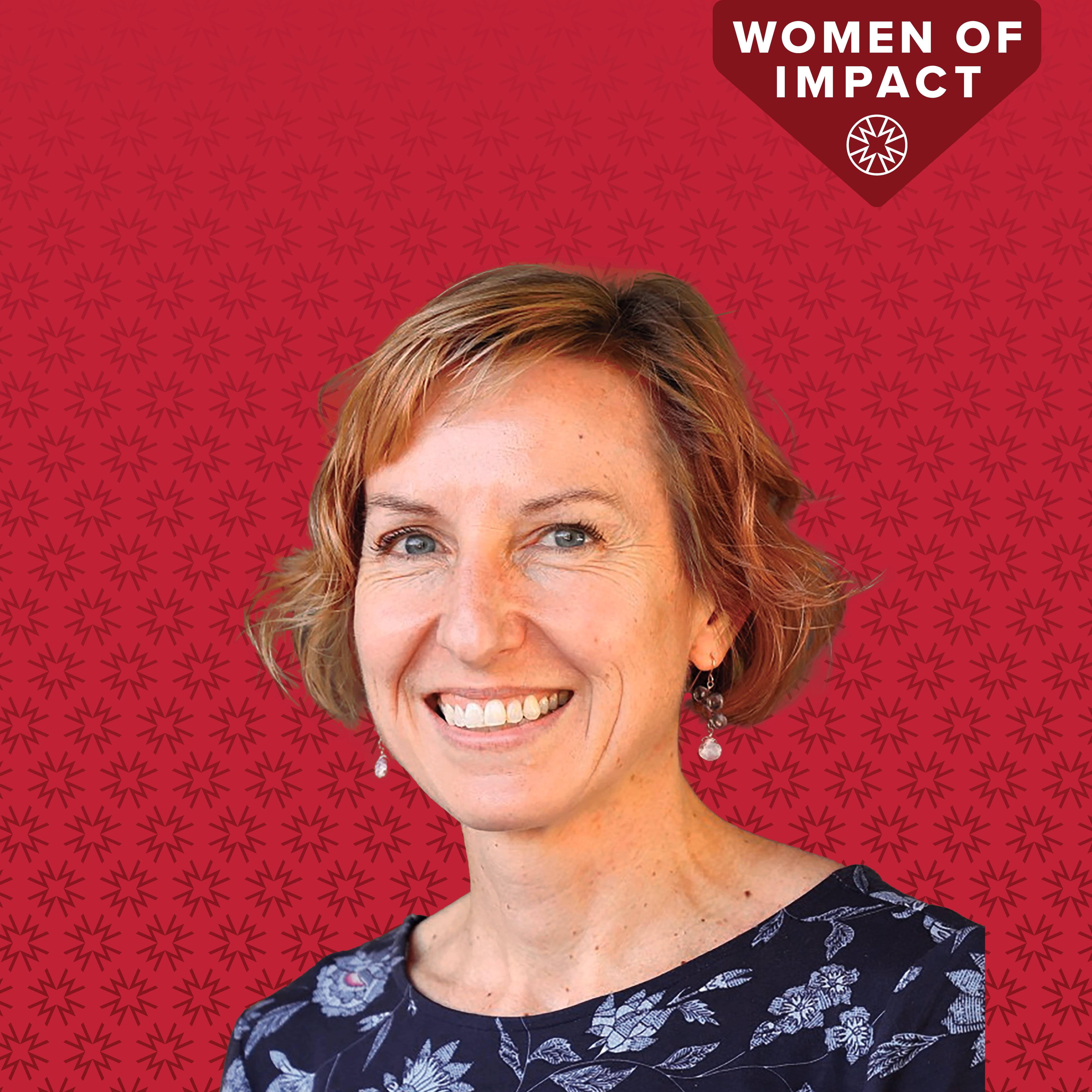Women of Impact: Interview with Theresa Crimmins
Theresa Crimmins, UArizona research professor and director of the USA National Phenology Network, discusses the study of nature's rhythms and the importance of citizen science.
In the "Conversations with Women of Impact" interview series, Women of Impact award winners provide perspectives on the future of their fields, share what inspires them, and discuss what they've been up to over the last year.

You’re the director of the USA National Phenology Network (USA-NPN). What is phenology?
“Phenology” is a bulky, ponderous word for phenomena that I believe everyone understands and appreciates. It refers to when seasonal, cyclic events like flowering, egg laying, migration, or hibernation occur in plants and animals.
I focus on plants. It’s hard not to notice when the palo verde trees grace us with their explosions of yellow along road corridors in the spring; likewise, we Tucsonans joyously celebrate the first waxy, white saguaro flowers of the season. Tohono Chul even has a “Bloom Watch” for night blooming cereus cacti, which flower en masse for only one night of the year.
The timing of events like flowering is rapidly changing in many plants and animals, with implications for not just social gatherings like when we look at flowers, but also for wildfire, agriculture, natural resource management, and the spread of wildlife and human diseases. The role of the USA-NPN—which is based at the University of Arizona—is to engage folks across the country in contributing observations of when things are happening and then to connect researchers and decision-makers with these data to better understand changes, consequences, and potential mitigation or adaptation opportunities.
Tell us about your research.
My research is aimed at better understanding how plants are responding to rapidly changing climate conditions. I’ve been fortunate to work with some extremely dedicated local individuals to establish conditions associated with flowering in plants. Several years ago, I worked with local naturalist David Bertelsen, who hikes the Finger Rock trail in the Catalina Mountains and tracks flowering plants. Together with Dr. Mike Crimmins, a climatologist in the Department of Environmental Science, we determined that, at low elevations, plants are primarily sensitive to moisture conditions, whereas, at higher elevations, temperature plays a larger role in cueing plants to flower. We also established that many plants are shifting their ranges upslope in response to increasingly warmer conditions. I’m now working with Bill Peachey, another very dedicated local naturalist who has carefully tracked saguaro flowering for nearly 20 years to better understand why flowering varies so dramatically from one year to the next.
What kind of impact are you trying to have in your field?
Working in a climate change-adjacent field is difficult, filled with a lot of gloom and doom and apocalyptic news, so my primary aim is to raise the profile of phenology while keeping my messaging both accurate and positive.
My other primary aim is to engage folks of all backgrounds and ages in documenting what’s happening in a personally meaningful way. Phenology offers a way for people to make connections with and grow appreciation for other living things and thereby find joy, meaning, and hope at a personal scale. I believe this is foundational for any further work.
In your view, what are some things people and institutions can do to retain and advance women in their work?
My path into my position has been non-traditional. I was able to work part-time as a university staff member while my children were young, and I only recently shifted into a faculty position. It was only due to unique, rare conditions that this was possible, and I am incredibly appreciative. My wish is that this sort of non-traditional, family-friendly path may be a possibility for others. Academia is demanding, and I know a lot of women—and men—opt out because they feel the choice is either family or work.
How do you foresee your field changing over the next 10-20 years?
I anticipate that, around the globe, we will feel the effects of a rapidly changing climate in increasingly direct and personal ways. I expect that my field will receive increased attention, as we collectively experience the consequences of rapidly changing seasonal events in our everyday lives. I hope the USA-NPN can both provide critical data to support basic science, decision-making, adaptation, and mitigation efforts as well as offer a way for individuals to connect with nature and find peace amid rapid change.
What’s on your desk right now?
At the moment, my desk is piled high with papers about phenology, as I am writing a book on the topic!
What are you reading and/or listening to lately?
Two podcasts that I’ve really been enjoying lately are In Defense of Plants and the Mongabay Newscast. Right now, I’m enjoying a book by the nature writer David Gessner, and am looking forward to reading Zoologies by UArizona Professor Emerita Alison Hawthorne Deming, which David recommended.
What have you been up to since receiving the Women of Impact award last year?
Much of my time is occupied with continuing to secure funding to support the USA-NPN. Our funding is presently cobbled together through an assemblage of short-term grants and a one-time federal appropriation; I am working hard to find more stable alternatives for supporting the important work we do.
Subscribe to the UArizona Impact in Action newsletter to receive featured stories and event info to connect you with UArizona's research, innovation, entrepreneurial ventures, and societal impacts.

